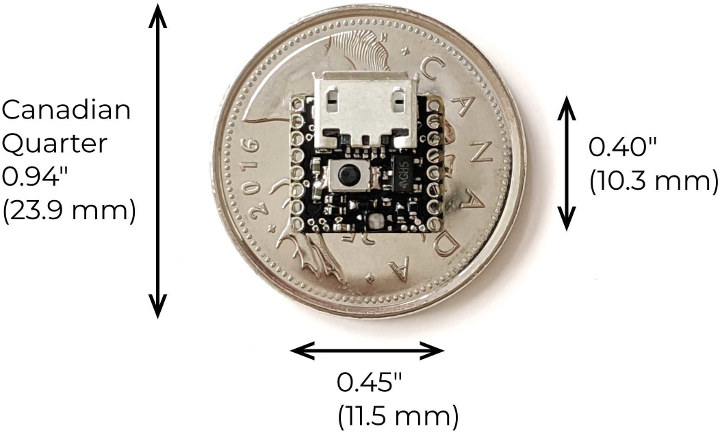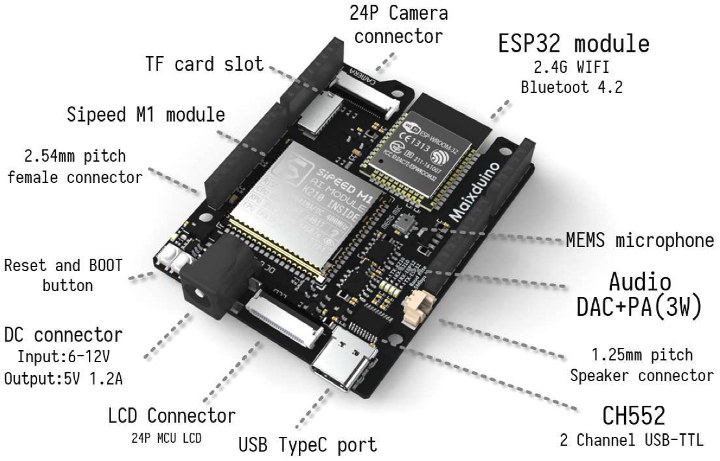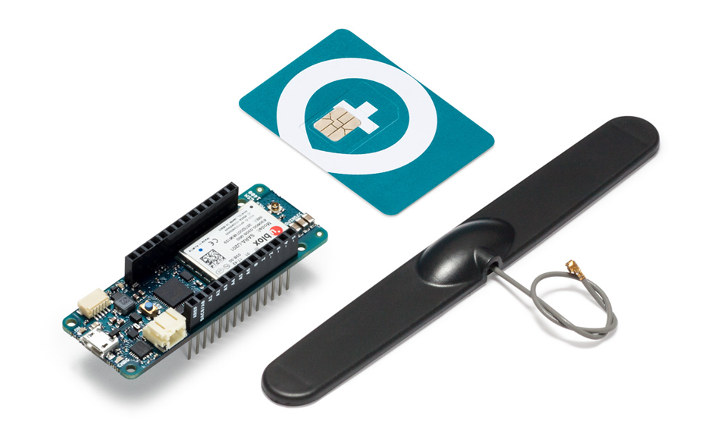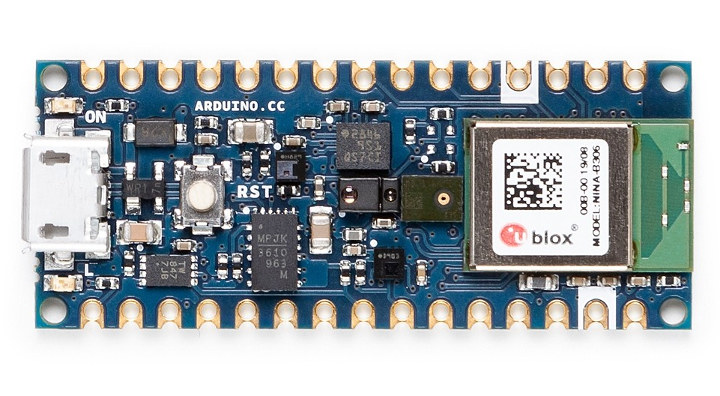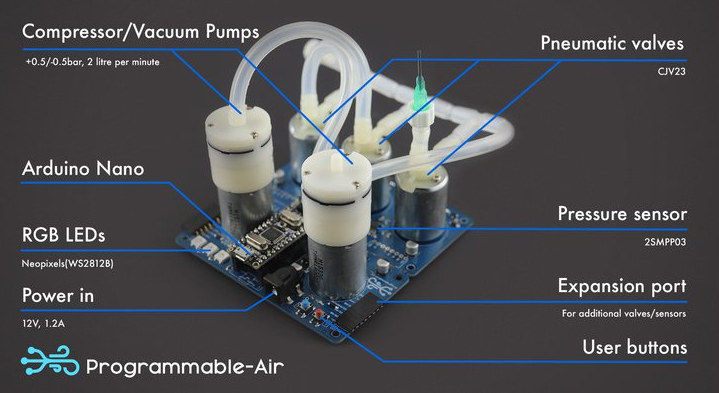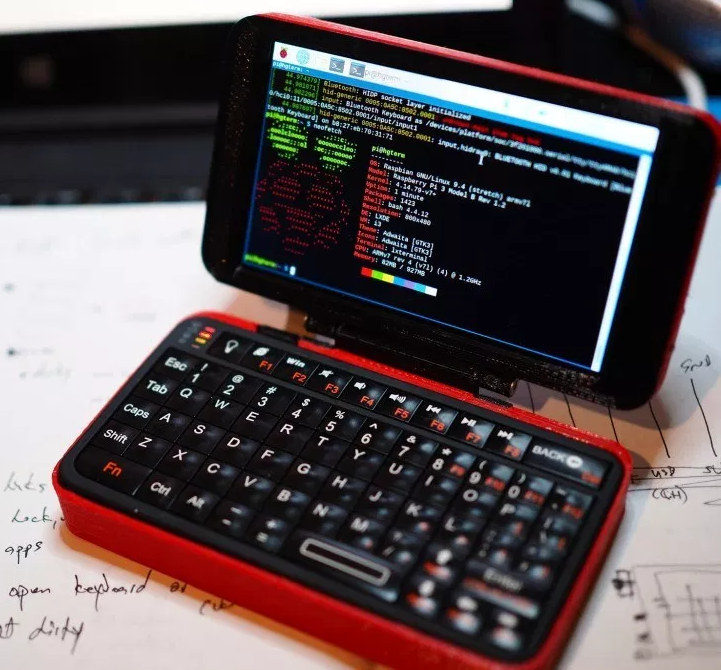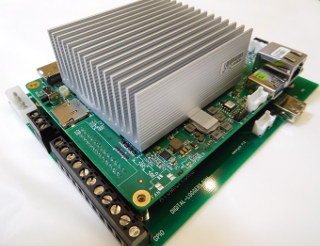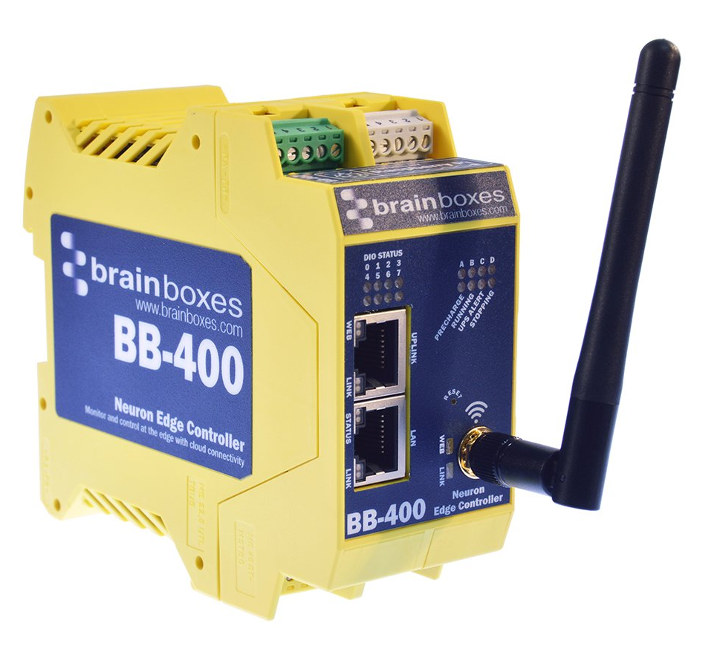We already have some really tiny Arduino compatible boards with for example OLIMEXINO-85S or μduino, with the latter holding the world’s smallest Arduino board crown for a couple of years at just 12×12 mm. But there’s a new “champion” in town now with ATTO board measuring just 11.5 x 10.4mm, and powered by Microchip ATmega32U4 microcontroller. ATTO board specifications: MCU – Microchip (Atmel) ATmega32U4 8-bit AVR microcontroller @ 16 MHz with 32KB flash pre-loaded with Arduino Leonardo bootloader (~4KB footprint), 2.5KB SRAM, 1KB EEPROM Expansion – 2x 8-pin 1.27mm pitch through holes for 12 digital I/Os, 4x PWM, and 4x analog input channels. UART, SPI, I2C/TWI, and ISP interfaces are also supported USB – Micro USB port for power and programming Misc – RGB LED via 3x PWM, Reset push-button Power Supply – Input: 4-13V DC via Vin, 5V via micro USB port; 3.3V operating voltage Dimensions – 11.5mm […]
Maixduino SBC Combines RISC-V AI, Arduino Form Factor, and ESP32 Wireless Module
Last year RISC-V cores made it into low-cost hardware with neural network and audio accelerator to speed up artificial intelligence workloads at the edge such as object recognition, and speech processing. More precisely, Kendryte K210 dual-core RISC-V processor was found in Sipeed MAIX modules and boards going for $5 and up. Since then a few other variants and kits have been made available including Seeed Studio Grove AI HAT that works connected to a Raspberry Pi or in standalone mode. Seeed Studio has now released another board with Kendryte K210 RISC-V AI processor, but based on Arduino UNO form factor and equipped with an ESP32 module for WiFi and Bluetooth connectivity. Meet Sipeed Maixduino SBC. Sipeed Maixduino specifications: AI Module – Sipeed M1 with Kendryte K210 dual-core RISC-V processor @ 600 MHz, KPU Convolutional Neural Network (CNN) hardware accelerator, APU audio hardware accelerator, 8 MB general purpose SRAM including 5.9MB […]
Arduino SIM for Arduino IoT Cloud Includes 10 MB of Free Data
I’ve been using Hologram developer SIM card for cellular IoT hardware reviews since it’s really great for evaluation as the company offers 1MB of data for free monthly. It’s supposed to work worldwide, but recently I discovered that while 3G worked fine in Thailand, the card would not support NB-IoT just yet. More companies are now offering this type of global cellular IoT SIM cards such as Twilio or SORACOM, and Arduino is now joining the fray by offering the Arduino SIM card specifically designed to connect to Arduino IoT cloud. The Arduino SIM card currently works with Arduino MKR GSM 1400 board only, and Arm Pelion Connectivity Management provides the cellular service with a global roaming profile than enables connectivity in over 100 countries at a low cost. The first 90 days are actually free if you use less than 10MB of data, after which the price is 5MB […]
Arduino Introduces Four New Nano Boards with WiFi, BLE, Sensors, and/or HW Crypto
The Maker Faire 2019 is now taking place in San Mateo, California, United States, and Arduino has made an habit of announcing new products during the events. This year is no different as the company has announced a new Nano Family with four boards: Arduino Nano Every powered by a Microchip ATMega4809 AVR microcontroller Arduino Nano 33 IoT with secure internet connectivity thanks to a U-blox ESP32 WiFi module and ATECC608A HW crypto chip Arduino Nano 33 BLE with Bluetooth connectivity via U-blox NINA B306 module based on Nordic Semi nRF52840 Bluetooth 5.0 chip Arduino Nano 33 BLE Sense with a design similar to Nano 33 BLE but some extra on-board sensors. Arduino Nano Every Specifications: MCU – Microchip ATMega4809 AVR microcontroller @ 20 MHz with 48KB flash, 6KB SRAM, 256 Bytes EEPROM USB to Serial via Microchip ATSAMD11D14A Arm Cortex-M0+ USB MCU 2x 15-pin expansion headers with GPIO, SPI, […]
Programmable-Air is an Arduino Nano Powered Pneumatics Kit (Crowdfunding)
Programmable-Air is a hardware toolkit that allows you to inflate and deflate objects. Powered by an Arduino Nano board, the kit comes with high pressure and vacuum pumps, valves, and a pressure sensor that enables users to experiement and learn about pneumatics and inflatables. Some of the potential applications include vacuum pick and place machines, soft robots able to walk, soft robotics hands, using a syringe as a linear actuator, inflatable bras, arts projects and more. Programmable-Air specifications: MCU Board – Arduino Nano board based on Microchip ATMega328P microcontroller Pneumatics – Full channel control, i.e. high pressure through atmospheric pressure to vacuum output in the same tube. Max pressure – 0.5 atmosphere (7.5 PSI / 50 kPa) Min Pressure – -0.5 atmosphere (-7.5 PSI / -50 kPa) Flow rate: 2 liters per minute per motor Expansion Grove I²C connector to easily add sensors (Not shown in prototype photo above) Expandable […]
Raspberry Pi based Hyper Keyboard Pi & hgTerm Handheld PCs, and RasPi Arcade Stick
There are so many products and projects based on Raspberry Pi that it’s difficult to keep track, and many are often not that interesting, not because they are not useful, but instead because it just feels we’ve seen those before. But this week I’ve come accross three projects that looks to be newsworthy including two handheld computers with a 4″ display, and one retro-gaming console with standard arcade buttons and controls similar to what is found in Pandora’s Box/Key 5S. hgTerm DIY Raspberry Pi Handheld Computer hgterm is a portable computer based on a stripped down Raspberry Pi 3 where the Ethernet port, HDMI port, and most of the USB ports have been removed. It features a 4″ touchscreen display, a Bluetooth keyboard all housed in a 3D printed case. It’s not actually a product that you can buy (yet), but a project made by Igor Brkić which you can […]
Atomic Pi SBC is back with pre-orders on Amazon and Ameridroid
Atomic Pi single board board is probably the SBC with the best performance / value ratio on the market, so when we reported that Atomic Pi was available worldwide last month the 6,000 pieces available quickly ran out of stock. Many people suspect it was a limited product run from a previous project, and indeed Atomic Pi is most likely AAEON MF-001 board that was designed for Kuri robot designed for the now-defunct Mayfield Robotics. But we have some good news as Atomic Pi SBC does not appear to be a one-off sales getting rid of stock as it’s now back for pre-order on Amazon US and Ameridroid with shipping scheduled for the end of May. I won’t go through the whole specifications again but with an Intel Atom x5-Z8350 quad core processor, 2GB RAM, and 16GB flash, Atomic Pi board has hardware far more powerful than the similarly priced […]
BB-400 Neuron Edge Dual Ethernet Industrial Controller Combines Raspberry Pi CM3+ and Arduino MCU
While the Raspberry Pi boards are mostly promoted as tools to teach STEM to kids and adults alike, they have found their way in a fair amount of industrial products, including ModBerry M500 industrial computer, Janz Tec emPC-A/RPI3 industrial embedded controller, and Kunbus RevolutionPi RevPi Core among others. There’s yet another option with Brainboxes BB-400 Neuron Edge industrial controller that was announced last year with Raspberry Pi Compute Module 3, but recently got an upgrade to Raspberry Pi Compute Module 3+. The controller features two Ethernet ports and also includes an Arduino compatible microcontroller to control the system’s eight configurable digital inputs and outputs. BB-400 Neuron Edge industrial controller specifications: SoM – Raspberry Pi Compute Module 3+ with Broadcom BCM2837B0 quad-core , Cortex-A53 processor @ 1.2GHz, 1 GB LPDDR2, 32GB eMMC Flash storage MCU – Unnamed Microchip Atmel Arduino compatible microcontroller Connectivity Ethernet Uplink Port – 1x RJ45 jack, 10/100Mbps […]


